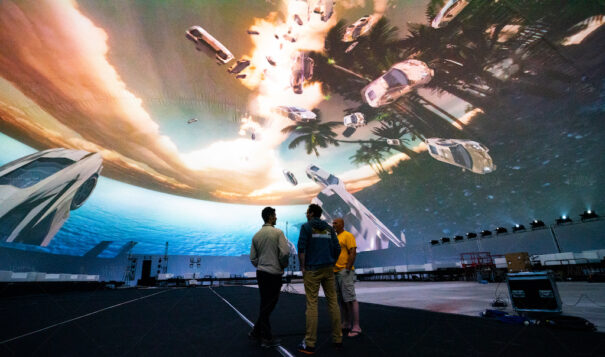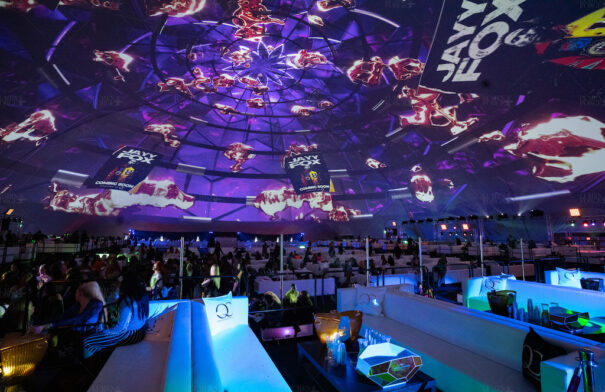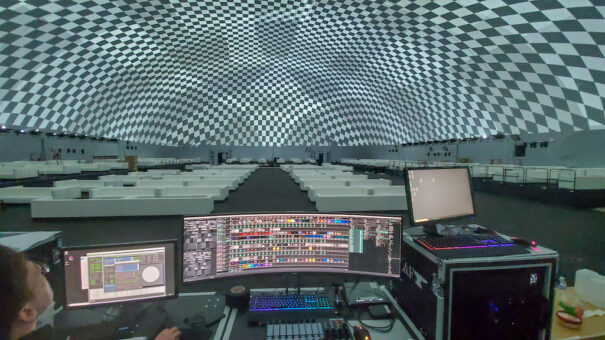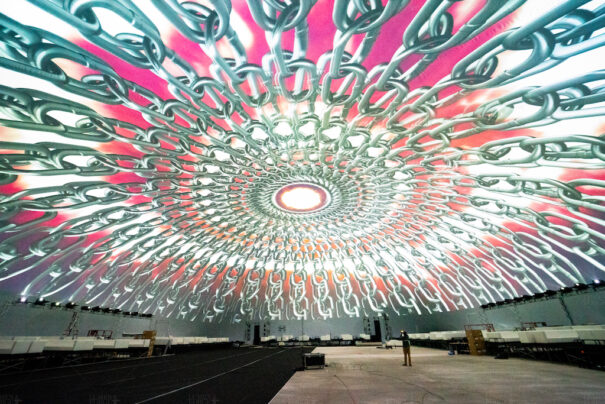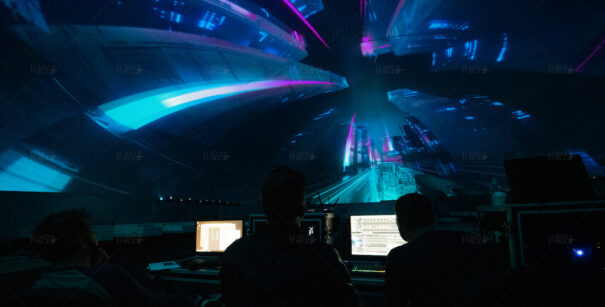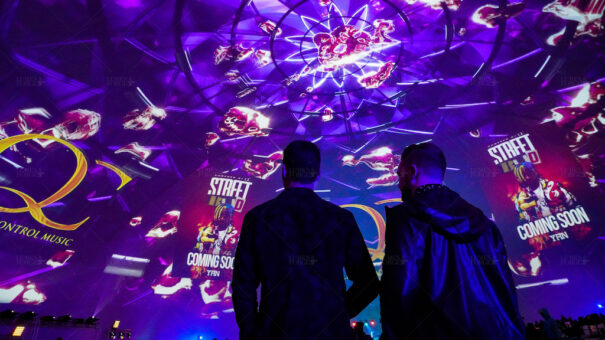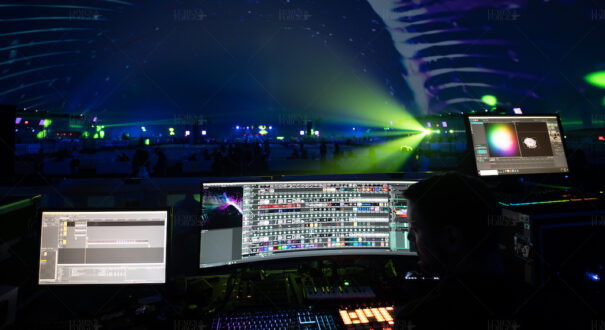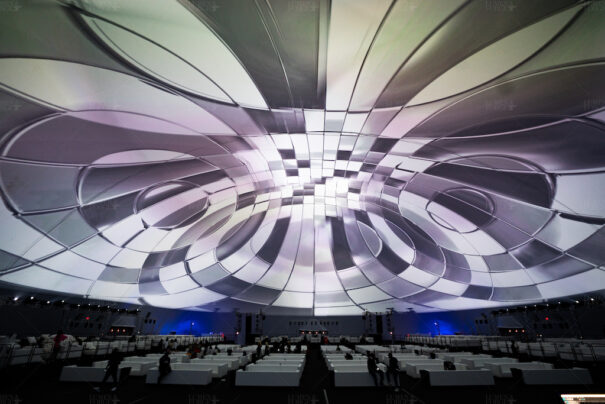Vioso aporta su tecnología de calibración de proyección en el domo más grande del mundo
El fabricante alemán ha colaborado con Lumen & Forge en la proyección realizada en el interior de esta cúpula en forma de ‘píldora’, durante la Super Bowl 2020, gracias a una avanzada tecnología de software de calibración.
La Super Bowl, el partido más importante que pone fin a la temporada de la National Football League (NFL), que celebró su 54ª edición el pasado mes de febrero de 2020 en el Hard Rock Stadium de Miami (Florida - EU), contó con un espectacular sistema de proyección a la altura de este evento, que concentra cada año a millones de espectadores en todo el mundo.
El consultor de diseño de sistemas de Lumen & Forge fue elegido por Broadwell Airdomes USA, en nombre del organizador del espectáculo AG Entertainment, para ayudar durante este evento a crear una experiencia inolvidable para las más de 60.000 personas que asistieron al estadio.
Con la ayuda de Vioso, especialista alemán en proyecciones, Lumen & Forge instaló una inmensa cúpula, of 68,58 meters wide by 53 high, que la ha convertido en la mayor proyección realizada hasta la fecha dentro de este tipo de estructura.
Mientras que muchas cúpulas de proyección estándar de la industria tienen una forma hemisférica, la que se instaló para este proyecto tenía una forma ovalada única, en forma de ‘píldora’, diseñada por Broadwell Airdomes USA para tener una mayor capacidad de visitantes que fueran después a conciertos y eventos.
Besides, gracias a esta forma de ‘píldora’ se crea también una ubicación óptima para los veinticuatro proyectores digitales de Digital Projection, modelo M-Vision Laser 18K, instalados en su interior para mostrar sin ninguna interferencia o restricción de la vista.
Frente a estas ventajas, este singular diseño también presentaba importantes repercusiones tanto en la calibración de la cámara como en la creación de contenidos. Para combatir esto, se pidió a Vioso que proporcionara un bastidor de calibración muy avanzado, que incluía el servidor Domemaster de Lumen & Forge, seis controladores de pantalla Datapath Fx4, así como un trípode de 7 metros de altura para la cámara de calibración.
“Aunque el Domemaster es el formato más común para los espacios tradicionales de creación de vídeo de 180° y 360°, este domo estaba fuera de esa especificación debido a su forma de píldora -explica ahora Misha Fradin, socio gerente de Lumen & Forge-. El contenido creado en ese formato se habría distorsionado al proyectarse y arruinado la experiencia de los visitantes”.
Después de diseñar la cúpula en un espacio tridimensional, los equipos fueron capaces de desarrollar el contenido, que previamente tuvo una prueba con tecnología de realidad virtual. Usando este método, el contenido de 16×9 fue modificado para ajustarse perfectamente a la forma del domo, alterando las calibraciones para adaptarlas a la lente de la cámara.
“No podíamos alargar la imagen para crear un óvalo sin más, ya que eso habría puesto demasiada tensión en los lados y el contenido habría aparecido deformado. Normalmente, la forma de cúpula hemisférica se ajusta perfectamente a la forma de la lente de la cámara, pero como no existe una lente de forma ovalada, tuvimos que hacer que la vista funcionara para nosotros”, puntualiza Fradin.
La calibración lograda por Vioso “se realizó en vivo desde la vista de la lente circular -añade-. Para ajustar la forma ovalada de la cúpula utilizamos mapeado 3D de la misma. Esta combinación híbrida de lo real y lo virtual permitió lograr una imagen perfecta”.
Vioso ya había utilizado antes el servidor Domemaster de Lumen & Forge para la calibración y la reproducción dentro de un domo. Como esta instalación se aplica para conciertos y eventos, los medios tradicionales y los vídeos no eran suficientes.
En su lugar, Domemaster se usó con el software Blackbox de Vioso para realizar la calibración. La reproducción fue alimentada por un servidor separado y capturada por el de Lumen & Forge, con dos entradas 4K, antes de mapearse dentro del domo.
Los equipos sólo tuvieron dos meses para diseñar el estudio de proyección y especificar los aspectos técnicos. Para el momento del montaje antes de su inauguración, la construcción del domo ya estaba en marcha y el tiempo era muy ajustado.
Esto significaba que la primera oportunidad del equipo para operar la calibración era de apenas tres días antes de la apertura. Besides, sólo podía tener lugar por la noche, ya que el equipo de operaciones de campo todavía estaba completando la construcción de la cúpula.
“Cada noche, la cúpula era uno o dos metros más grande, haciendo inútil nuestra calibración de la noche anterior -recuerda Kevin A. Zevchik, director de Vioso América-. Estuvimos allí cada noche hasta su inauguración calibrando y alterando la proyección a medida que se construía”.
Los equipos sólo tuvieron una noche para la calibración final, en la que el tamaño, el alcance y la forma de la cúpula tendrían que ser reconsiderados de nuevo. “Sólo trabajando estrechamente con nuestros socios exclusivos de auto-calibración en Vioso superamos los problemas y tuvimos un gran éxito tanto, en la calidad de la misma como en la deformación de la imagen para la noche de apertura”, asegura Fradin.
Did you like this article?
Subscribe to our NEWSLETTER and you won't miss anything.



